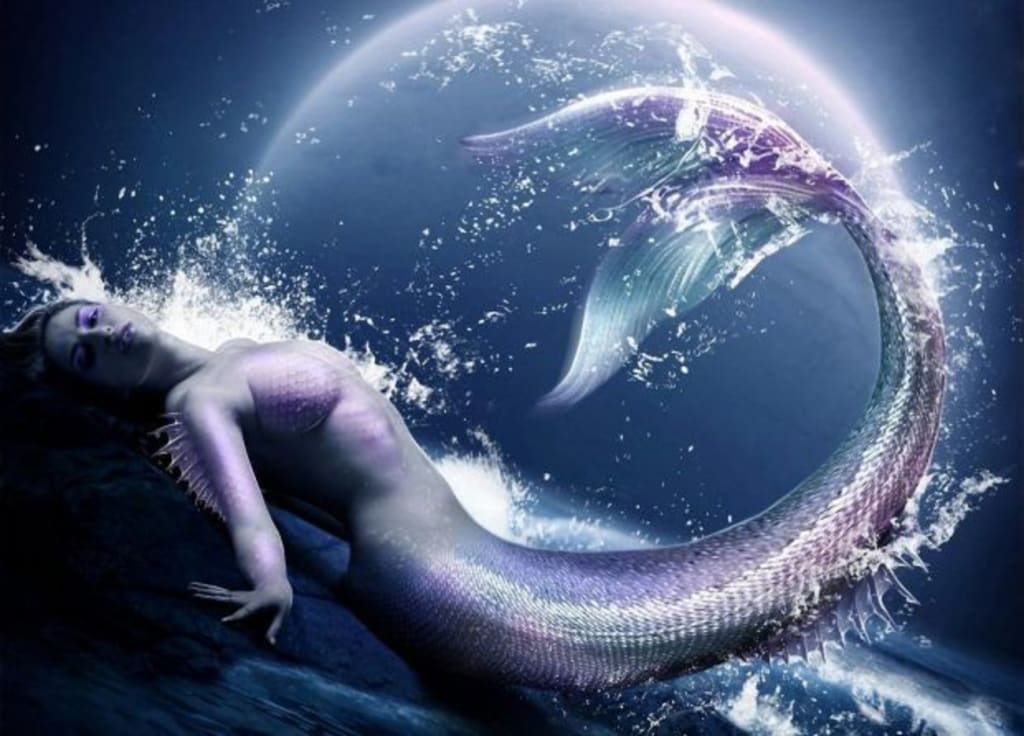
For an extended period, mermaids have enthralled people with their mysterious beauty, captivating charm, and hybrid human-fish forms. Across many cultures, mythology and folklore have long featured these legendary creatures, who are frequently portrayed as elegant beings living in the ocean's depths. The idea of mermaids continues to captivate and inspire people, from folklore from antiquity to contemporary pop culture.
The stories of sea gods and animals that dominated the tales of ancient civilizations like the Greeks, Babylonians, and Assyrians are where mermaid folklore first emerged. Greek mythology describes the sirens as half-bird, half-woman beings that used their seductive songs to entice seafarers to perish. These stories changed over time, giving rise to the recognizable mermaid picture. a being that embodied both the mystery of the sea and the beauty of humanity.
Hans Christian Andersen's 1837 Danish fairy tale, "The Little Mermaid," is the source of one of the most well-known mermaid traditions. In this well-known tale, a young mermaid wishes to become human in order to follow her love for a prince. Notwithstanding its terrible conclusion, the tale has won over readers' hearts everywhere and served as an inspiration for innumerable literary, cinematic, and artistic adaptations.
Mermaids have influenced popular culture in addition to literature and tradition. Mermaids are a common theme in many facets of contemporary culture, from Disney's "The Little Mermaid" to television series, music, and fashion. Especially in swimwear and accessories, mermaids are a popular theme in fashion design because they represent freedom, beauty, and the secrets of the deep.
Mermaids are beautiful, but they also have symbolic meaning in many cultures. They are associated with danger and seduction in certain cultures, and fertility, love, and protection in others. Their contradictory characteristics mirror humanity's nuanced connection with the sea, which is both seductive and dangerous.
Mermaid lovers have been sharing artwork, anecdotes, and other mermaid-related content on social media in recent years, which has contributed to the rise of mermaid popularity. Festivals and events with mermaid themes draw attendees of all ages as they honor the wonder and enchantment of these legendary creatures.
Time and cultural boundaries do not diminish the fascination of mermaids, despite their legendary beginnings. Mermaids never cease to amaze and inspire us, reminding us of the limitless creativity and enduring power of folklore and myth, whether they are seen as cautionary tales of the dangers of the water or as symbols of romance and adventure. The mermaid is an eternal reminder of the treasures that exist beneath the ocean's surface and in human imagination in a world where reality sometimes seems uninteresting.
Stories about mermaids have long been a staple of world folklore, with local adaptations found in many civilizations. Here are few instances:
Greek mythology: Known for their mesmerizing calls, sirens were sometimes portrayed as half-bird, half-woman beings that tempted sailors to their demise. Sirens are thought to have preceded the current notion of mermaids, even if they aren't usually depicted as mermaids in the conventional sense.
The well-known fairy tale "The Little Mermaid" by Hans Christian Andersen narrates the narrative of a little mermaid who longs to be human in order to be with her beloved prince. In Andersen's story, themes of identity exploration, longing, and sacrifice are explored.
Scottish folklore: Tales of selkies, fabled beings that can change from seals into people by shedding their skins, are prevalent in Scottish folklore. Selkies are comparable to mermaids in folklore, even if they are not really mermaids, especially in their connection to the sea.
Japanese folklore: The Ningyo is a mermaid-like creature that is frequently portrayed as having a human upper body and a fish lower body. There are many different legends about the Ningyo; some see them as lucky charms, while others see them as signs of impending doom.
Caribbean folklore: Tales of the "Mermaid of the Caribbean" are recounted in this context, frequently detailing sailors' experiences encountering mermaids while sailing the area's waters. Generally, mermaids either lead sailors astray or save them in these stories.
Inuit Folklore: Reported to live in the waters of the Arctic, the Qalupalik is a marine creature that resembles a mermaid. It is said that the Qalupalik, which has long hair and green skin, catches misbehaving kids who venture too near to the water's edge.
These are but a handful of the numerous mermaid stories that exist in various civilizations. The continuing interest with these mythological creatures relates to their worldwide appeal and relevance in human narrative, even though the details of mermaid tradition may differ.






Comments
There are no comments for this story
Be the first to respond and start the conversation.